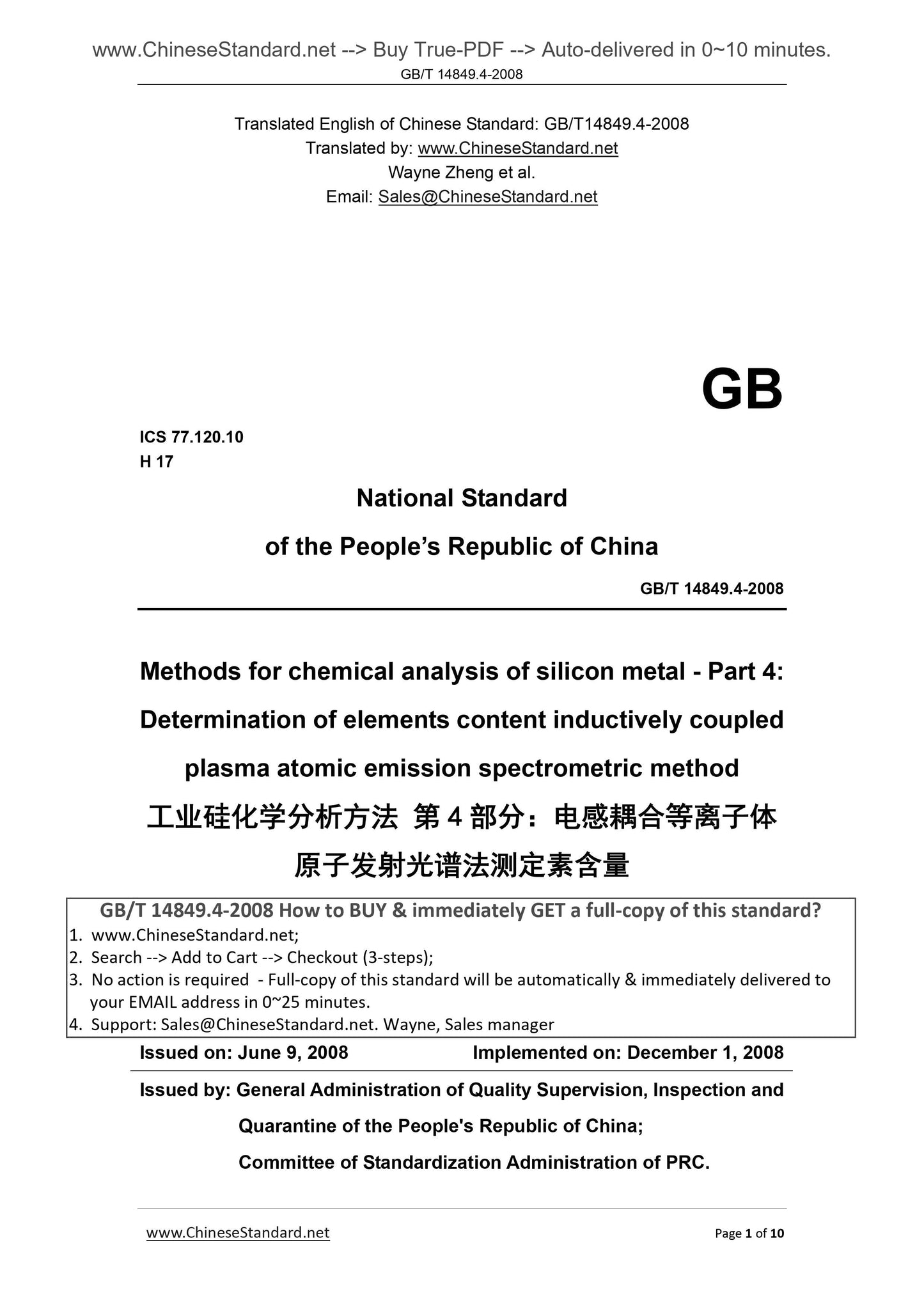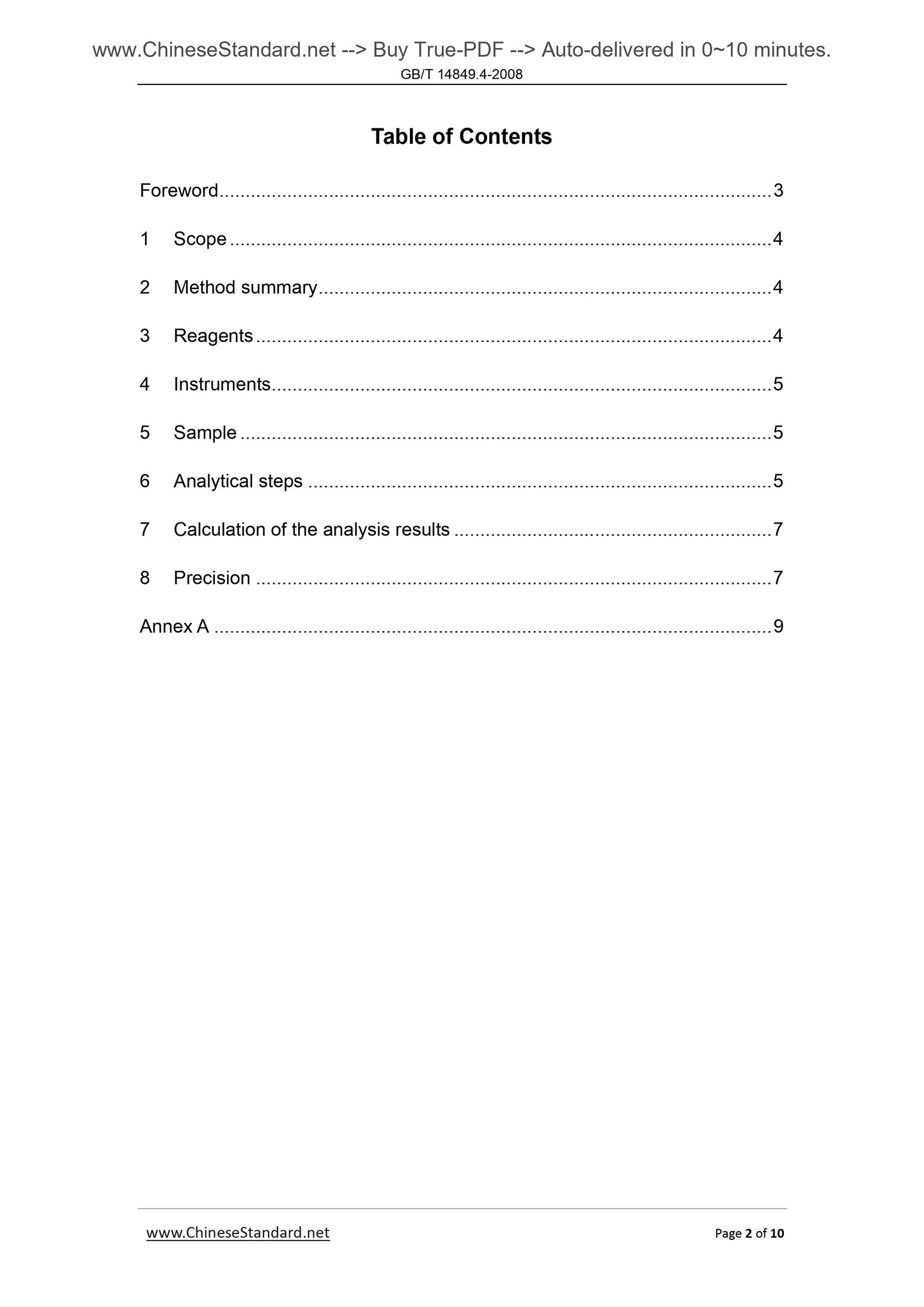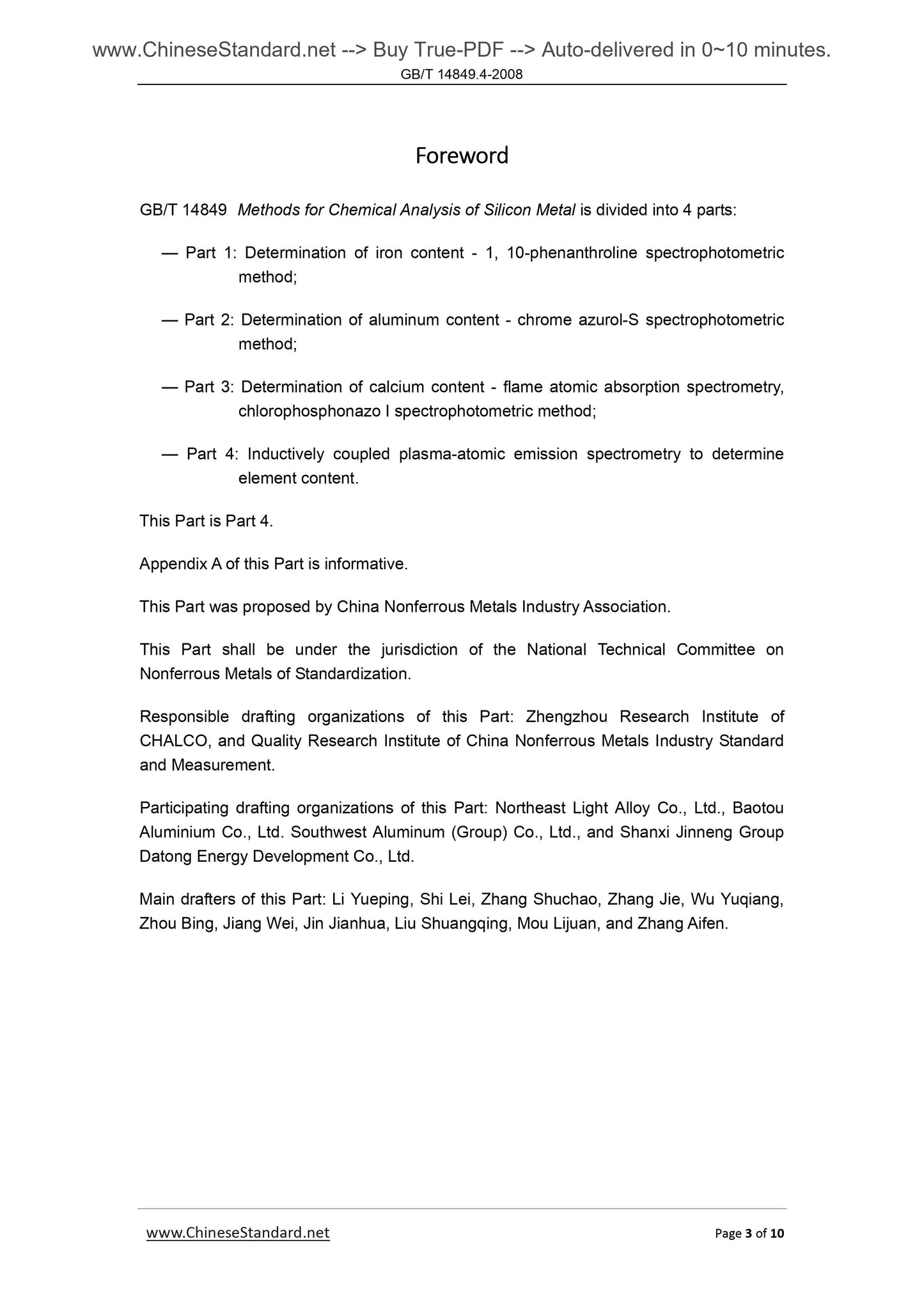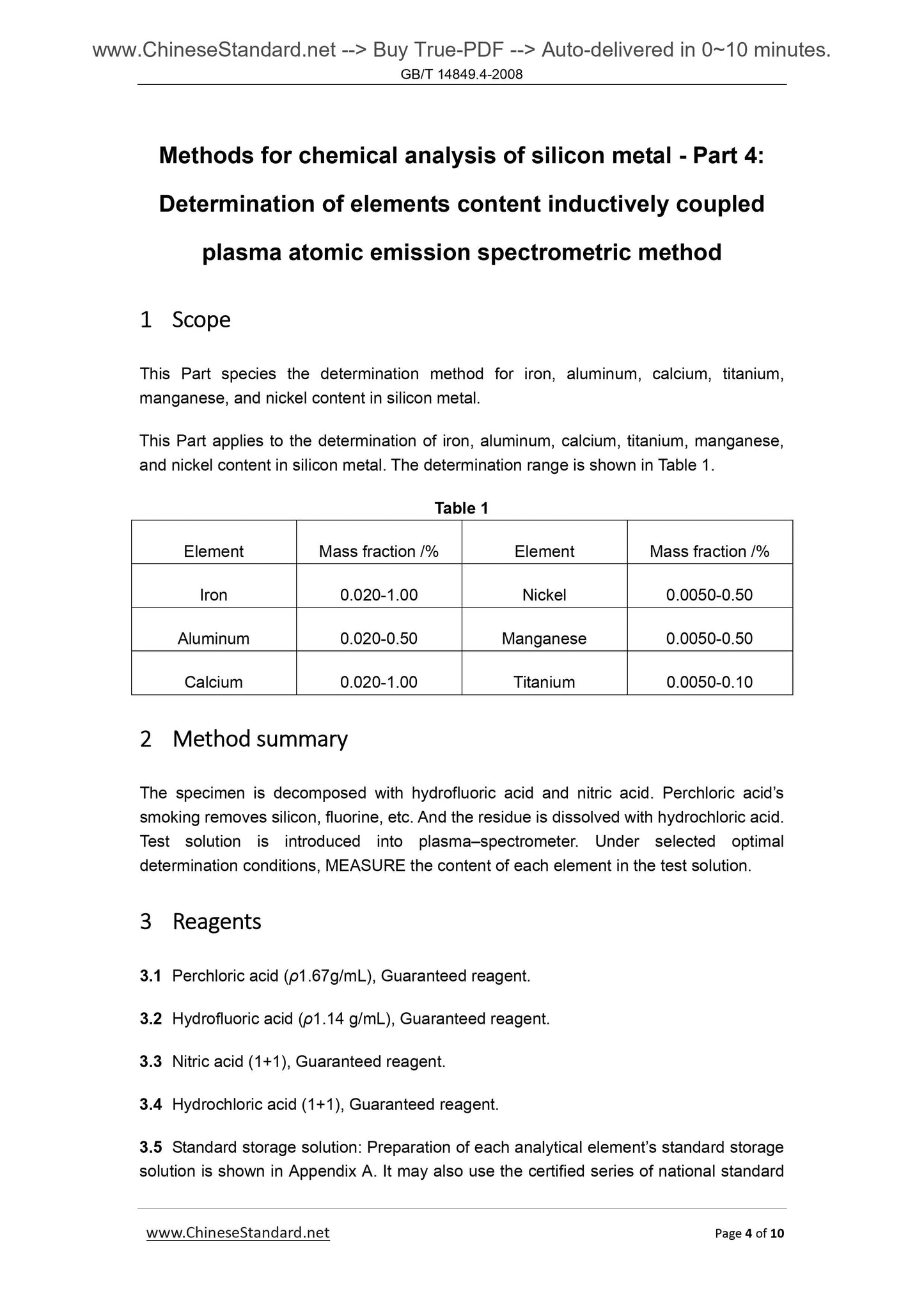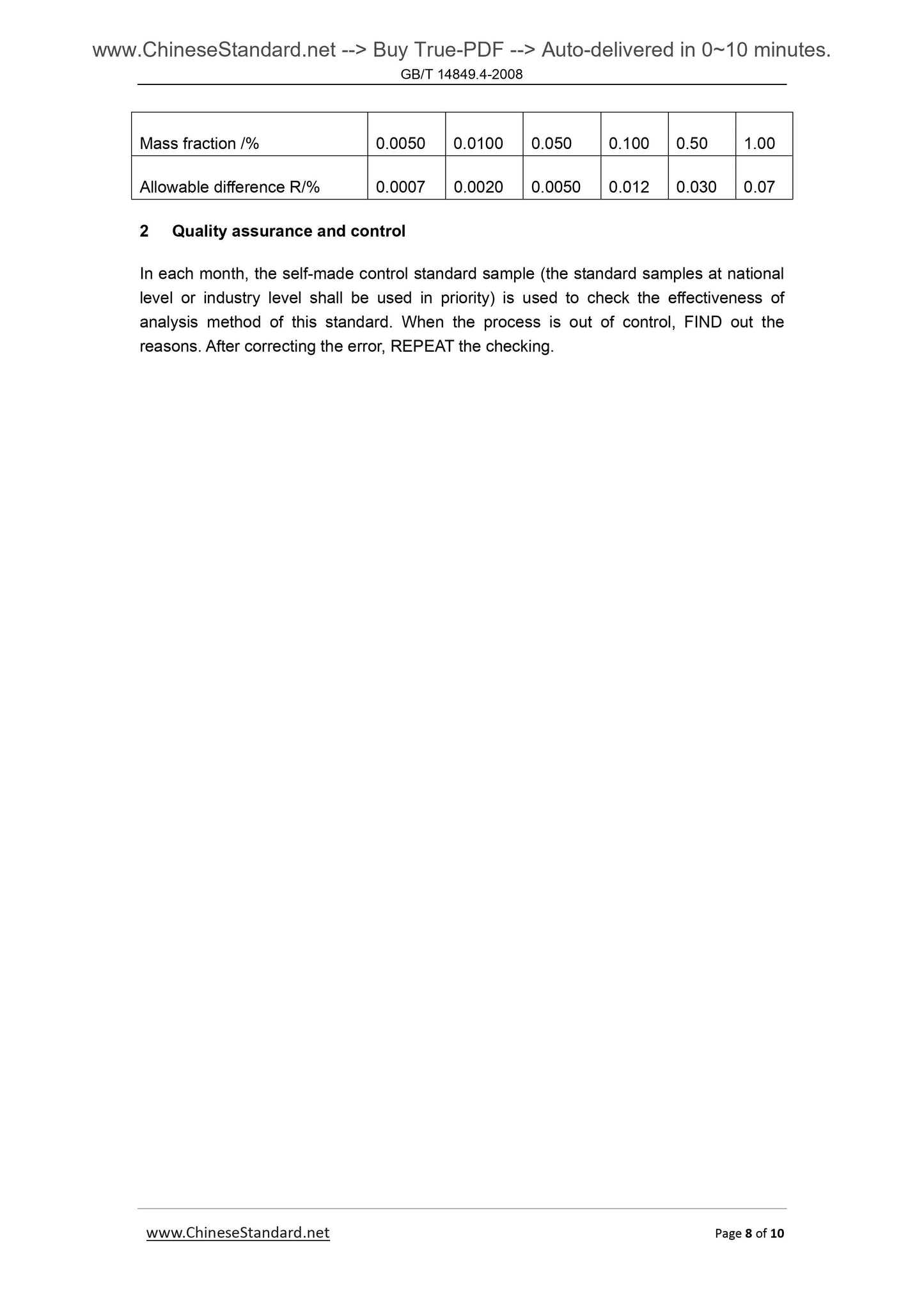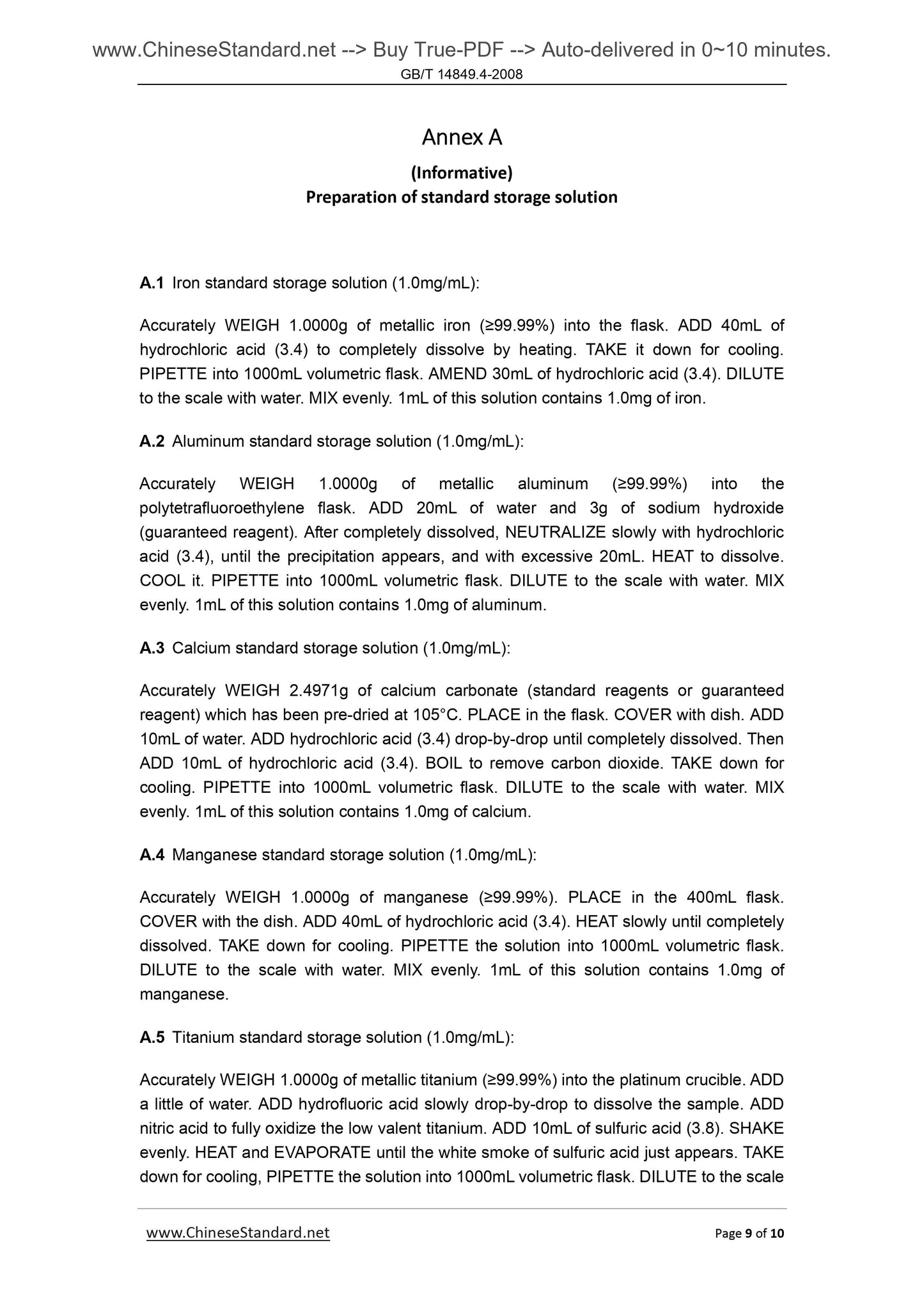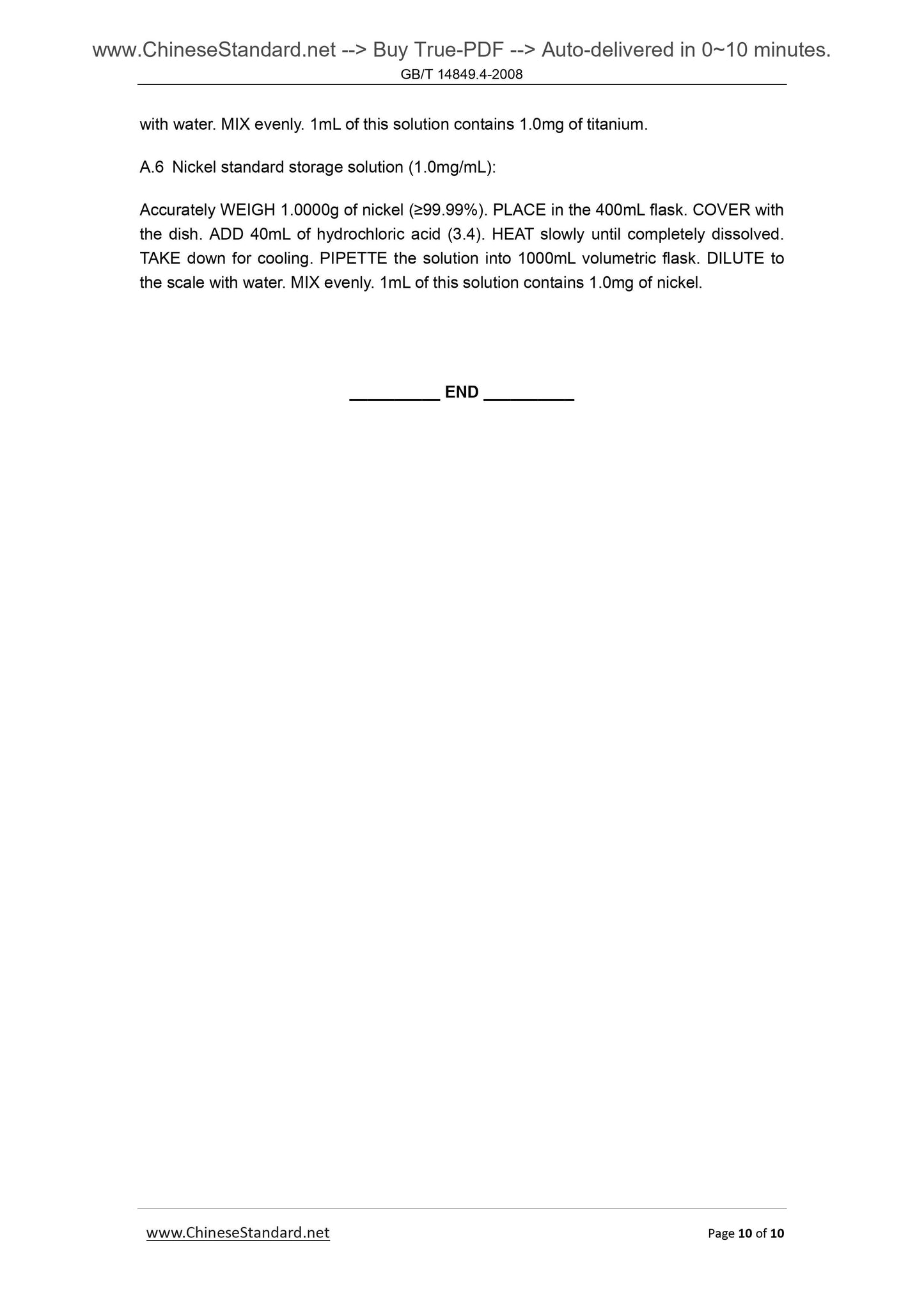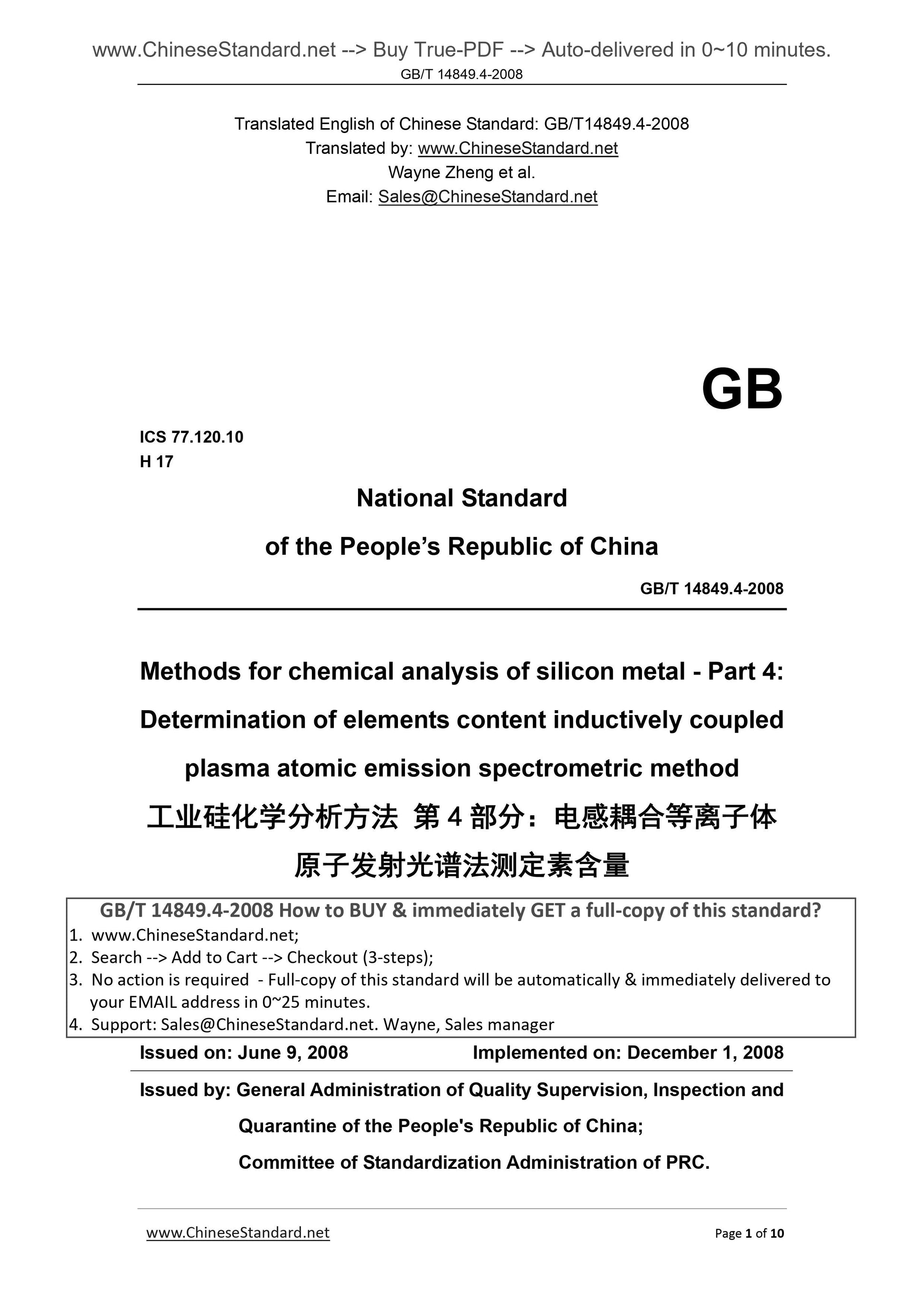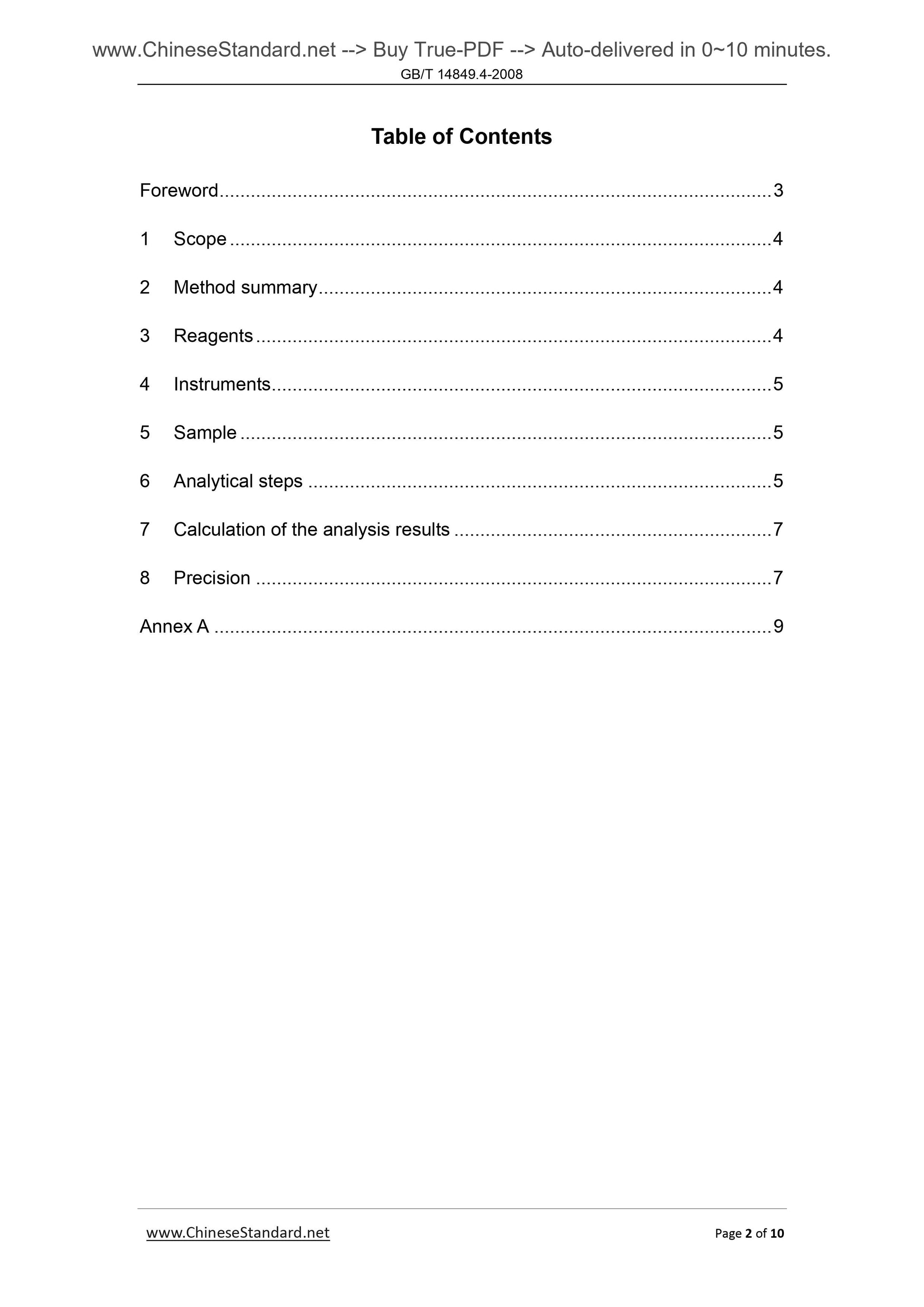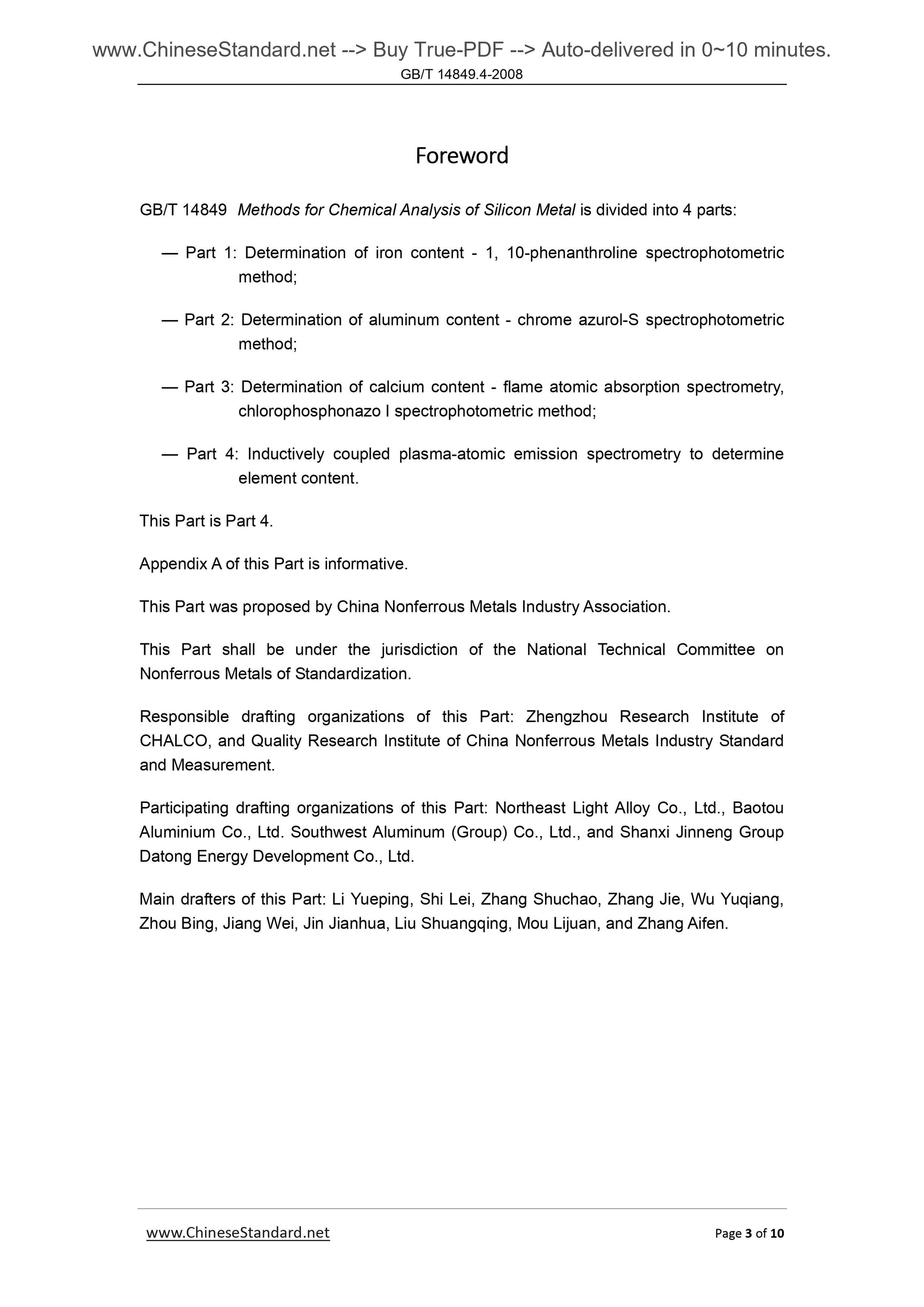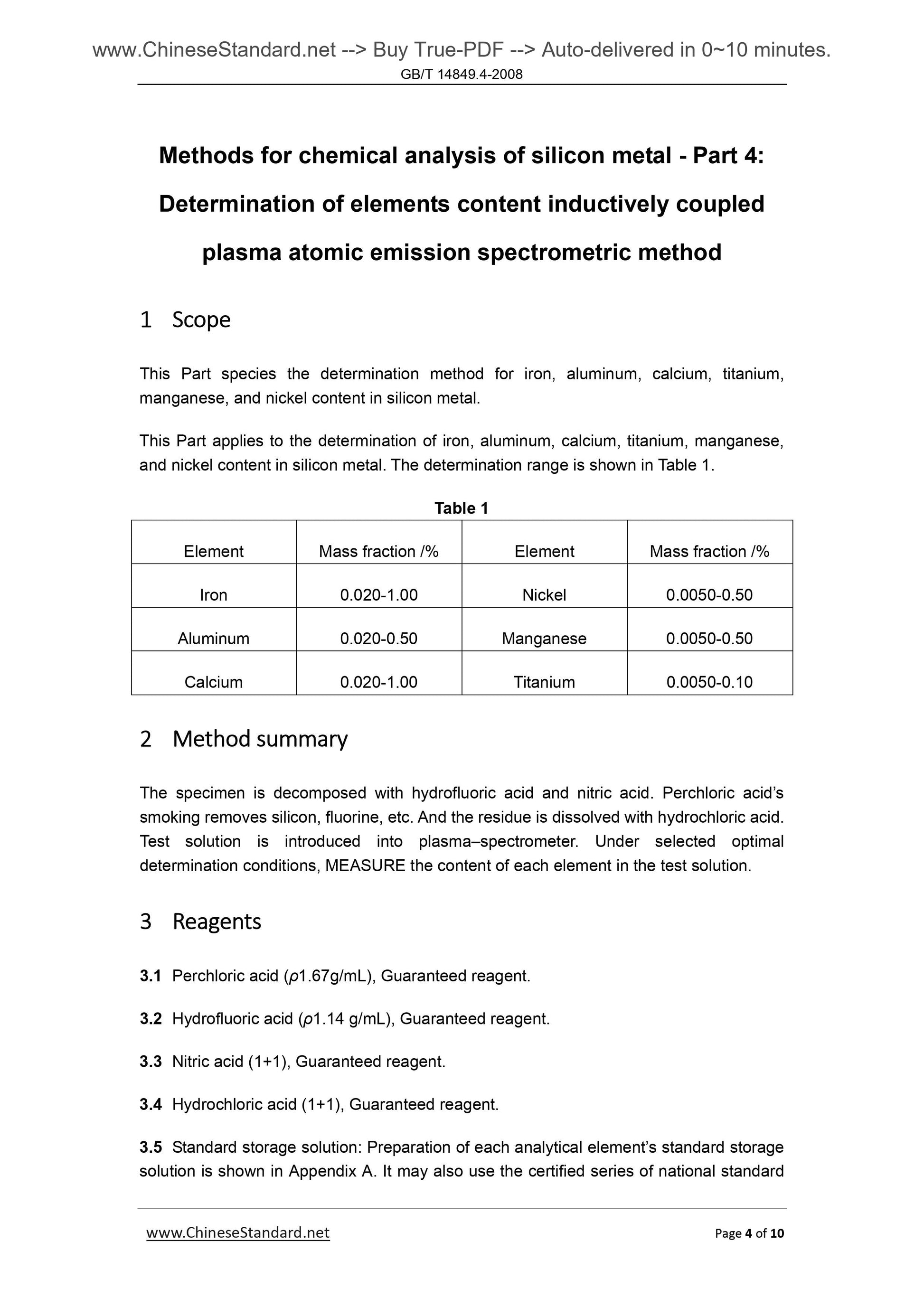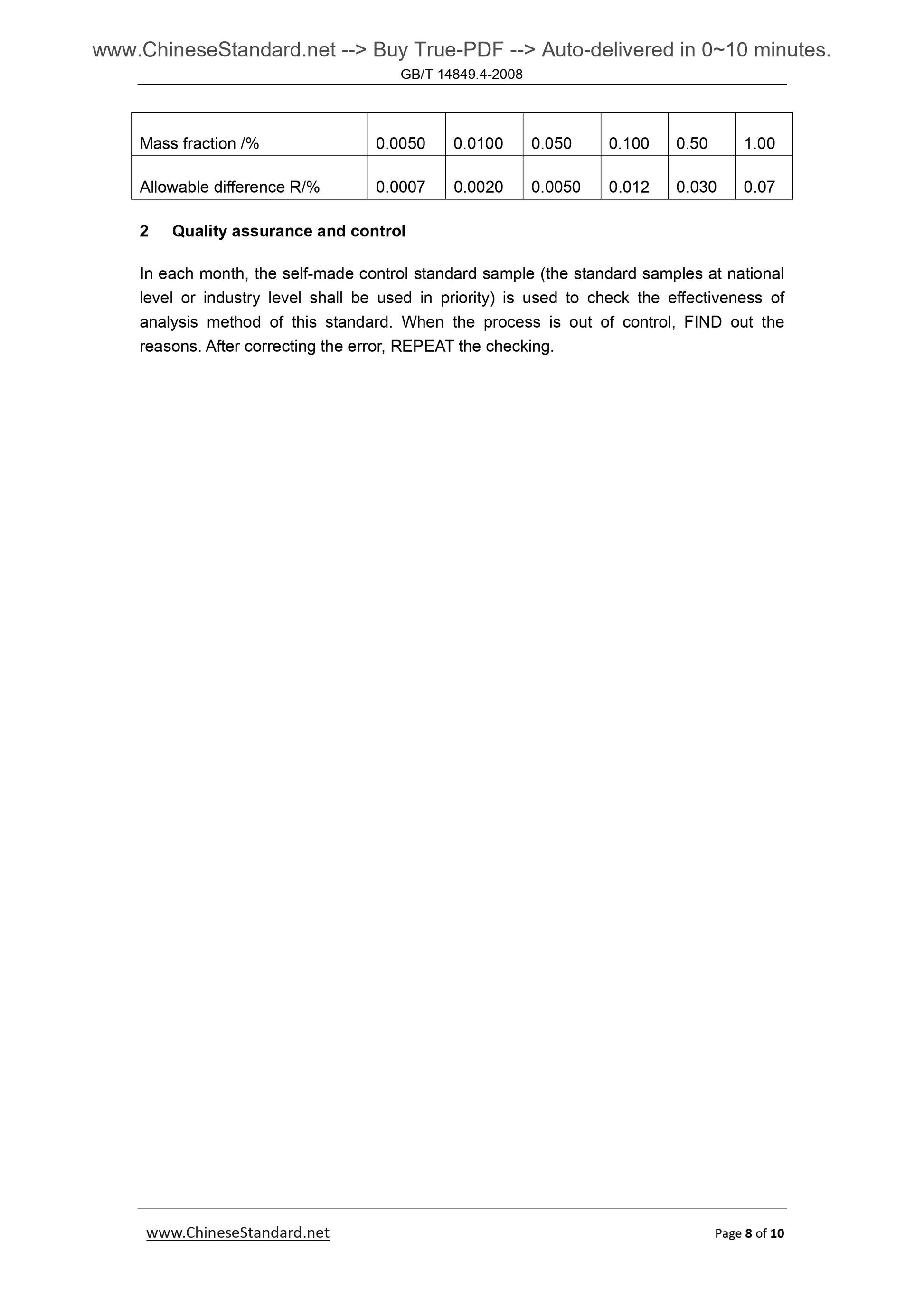1
/
of
7
PayPal, credit cards. Download editable-PDF & invoice In 1 second!
GB/T 14849.4-2008 English PDF (GB/T14849.4-2008)
GB/T 14849.4-2008 English PDF (GB/T14849.4-2008)
Regular price
$90.00
Regular price
Sale price
$90.00
Unit price
/
per
Shipping calculated at checkout.
Couldn't load pickup availability
GB/T 14849.4-2008: Methods for chemical analysis of silicon metal -- Part 4: Determination of elements content Inductively coupled plasma atomic emission spectrometric method
Delivery: 9 seconds. Download (and Email) true-PDF + Invoice.Get Quotation: Click GB/T 14849.4-2008 (Self-service in 1-minute)
Newer / historical versions: GB/T 14849.4-2008
Preview True-PDF
Scope
This Part species the determination method for iron, aluminum, calcium, titanium,manganese, and nickel content in silicon metal.
This Part applies to the determination of iron, aluminum, calcium, titanium, manganese,
and nickel content in silicon metal. The determination range is shown in Table 1.
Table 1
Element Mass fraction /% Element Mass fraction /%
Iron 0.020-1.00 Nickel 0.0050-0.50
Aluminum 0.020-0.50 Manganese 0.0050-0.50
Calcium 0.020-1.00 Titanium 0.0050-0.10
2 Method summary
The specimen is decomposed with hydrofluoric acid and nitric acid. Perchloric acid’s
smoking removes silicon, fluorine, etc. And the residue is dissolved with hydrochloric acid.
Test solution is introduced into plasma–spectrometer. Under selected optimal
determination conditions, MEASURE the content of each element in the test solution.
Basic Data
| Standard ID | GB/T 14849.4-2008 (GB/T14849.4-2008) |
| Description (Translated English) | Methods for chemical analysis of silicon metal -- Part 4: Determination of elements content Inductively coupled plasma atomic emission spectrometric method |
| Sector / Industry | National Standard (Recommended) |
| Classification of Chinese Standard | H17 |
| Classification of International Standard | 77.120.10 |
| Word Count Estimation | 7,755 |
| Date of Issue | 2008-06-09 |
| Date of Implementation | 2008-12-01 |
| Regulation (derived from) | National Standard Approval Announcement 2008 No.9 (Total No.122); National Standard Approval Announcement 2014 No.27 |
| Issuing agency(ies) | General Administration of Quality Supervision, Inspection and Quarantine of the People's Republic of China, Standardization Administration of the People's Republic of China |
| Summary | This standard specifies the industrial silicon iron, determination of nickel content, aluminum, calcium, titanium, manganese. This section applies to industrial silicon iron, Determination of nickel content, aluminum, calcium, titanium, manganese. |
Share
